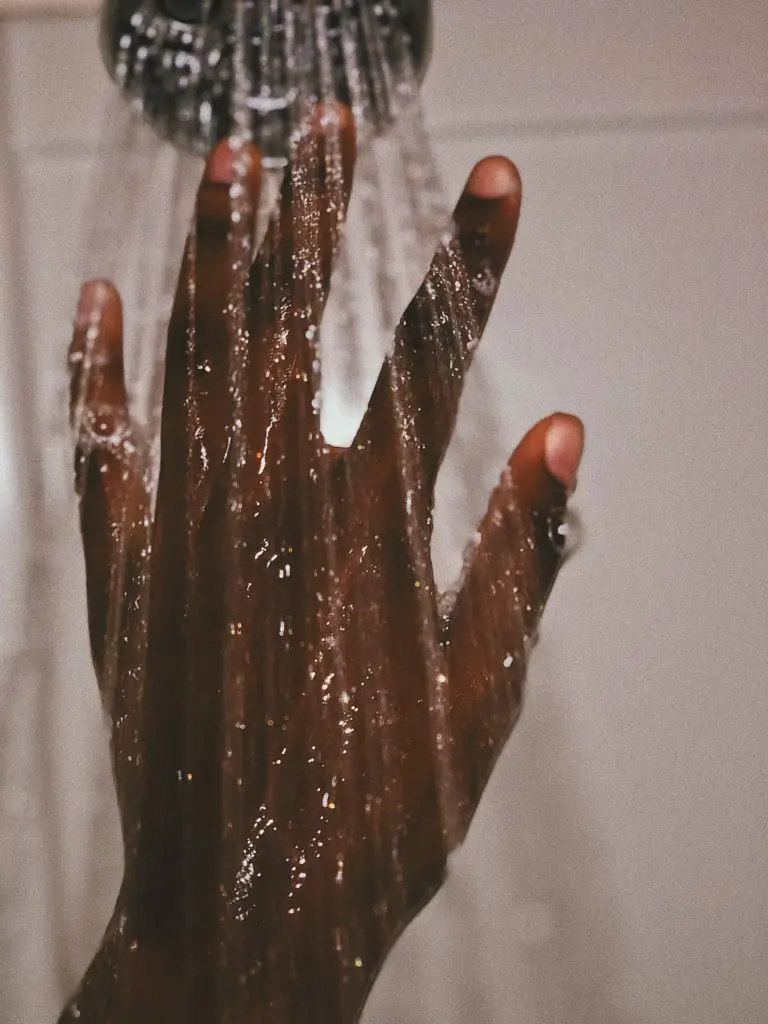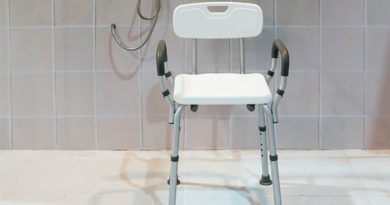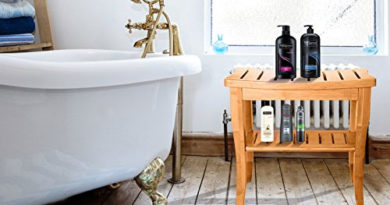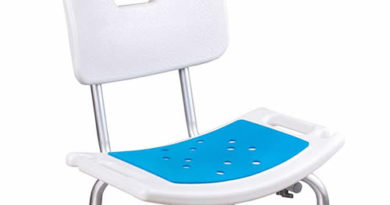How to Make Shower Water Hotter
**Articles may contain links that I earn compensation for if clicked and you make a purchase. As an Amazon Associate, I earn from qualifying purchases. These earnings do not actually impact the price of the product or service.
Are you a fan of hot showers but seem to never get the right temperature? Most water heaters do indeed come equipped with a handle or knob to regulate the water temperature.
However, it is not uncommon for people to find that their shower water often feels cool and unpleasant. In fact, there are several reasons why you may not get hot water from your heater tank when needed.
These problems include low gas pressure, a low-temperature setting on your hot-water supply valve, and a dirty shower head. But don’t worry; it’s time to fix the problem and make your shower warmer.
 What Could Make Your Shower Water Give Out Cold Water?
What Could Make Your Shower Water Give Out Cold Water?
Most people expect the hot water in the shower to be hot—so hot that they might not even be able to completely adjust to it when they get out of the shower. When the water is less than scalding, it’s easy to assume there’s something wrong with the plumbing or that you’ve got the thermostat set incorrectly. If this is happening to you, don’t worry—there are a few things you can try before calling a plumber.
If you want your shower water to be the right temperature, the first thing you need to know is how hot it usually gets. This is an essential question if you have an electric tank.
The temperature of the water in your tank depends on several factors, mainly the size of your tank, the flow rate that comes from your taps, and lastly, the power of your pump. Of course, the kind of pump you have will affect the temperature of your water too.
It would help if you maneuvered the shower valve to get the hot water temperature. This will allow you to change the temperature to get water via the hot water line. If you’ve previously adjusted the temperature setting and still have problems, here are some more options to examine.
-
A Clogged Shower Head
Your shower head may be blocked because of the buildup of sediment or scale, and you’ll need to clean it to get hot water. This is because a clogged showerhead can give you lukewarm water at best. In the worst-case scenario, you might even end up with a cold sprinkle instead of the warm water you need for your shower.
If the problem is that you don’t have enough water pressure or hot water pressure (or both), you might be able to deal with that issue by installing an aerator on your shower head. They’re cheap and easy to install since the only things you need are pliers and a wrench.
The most important thing? Be sure to turn off the hot water valve first! If you don’t do that, you could burn yourself badly when you loosen the hot water handle to unscrew it from its place.
-
Burned Out Heating Elements
The most common cause of cold showers is faulty heating elements. If you’re trying to get to the bottom of your cold water problem, inspecting your water heater’s heating element should be your first step.
After turning it off, check whether your water heater’s heating element has warmed up. If not, you’ll likely need to replace it.
The good news is that this replacement is relatively simple—you can save money by doing it yourself without sacrificing quality. This can be as easy as taking a wrench and turning the heating element counterclockwise until you can remove it from its base.
Today, the majority of showers supply both cold and hot water. You should call a professional if you’ve exhausted all the troubleshooting steps. Many people have access to professionals who can assist with maintaining their water heaters.
How Can You Make Your Shower Water Hotter?
By this point, you’ve learned what makes a hot water heater produce cold water when you’re looking for a hot shower. Now, let’s focus on making your water heater tank produce hot water the way it’s supposed to.
Here are some tips to help you get the most out of your water heater.
-
Increase Water Heater Temperature
First, you have to make sure that your water heater is at its highest temperature. If you have a gas water heater, you must adjust the thermostat temperature.
When altering the temperature of your water, always apply safety precautions. If you’re using a tankless water heater or other heating equipment, remember to put safety first. Water heaters could pose serious risks if you do not use them wisely.
-
Adjust the Shower Head Flow Control
If your water heater has an adjustable valve, set it to the highest setting. If you don’t have a shower valve stem, you can increase the water pressure. However, you may need the assistance of a professional plumber to improve the pressure in this case.
You might also consider installing a valve stem for the optimum heating output. You can effortlessly regulate the temperature of your shower with the help of a faucet lever.
Fortunately, you do not need professional assistance to install the valve stem. Instead, you can follow the simple steps to install the faucet in your shower or tub. Once you’ve installed the faucet, you can change the temperature to your liking.
-
Install a Hot Water Tank Booster
A hot water tank booster can considerably increase the temperature of your water. Certain water tank boosters help you get the ideal temperature for a hot shower with temperature control functions.
However, some boosters simply heat your water quicker than a standard water heater. This is helpful in the winter months since you won’t have to wait as long to get the desired temperature for your shower.
With that said, it’s important to remember that the booster can’t produce more hot water than your tank can hold. So, if you have a relatively small tank, a temperature booster may not be worth it.
-
Use Insulators
Adding insulation to your water pipes can reduce heat loss and prolong the life of your hot water. Due to this, your water heater will remain at the ideal temperature throughout the cooler winter months.
-
Change Your Heating Element
To make your shower water hotter, you may need to replace your heating element. However, this depends on the component you are using. For example, if you use an electric heater, you can simply increase the wattage of your element.
-
Using a Tankless Water Heater
Consider getting a tankless water heater so you always have enough hot water for your shower. Depending on the season, a tankless water heater may provide hot and cold water.
When buying this device, choose one that can heat water to your desired temperature. There are a variety of water heaters available, each with its own set of features, but it is always to your advantage to go for the best.
-
Get Your Water Heater Serviced
If all else fails, having your water heater serviced can provide you with adequate hot water. Water heater maintenance warms your water and extends the life of your heater. Also, if you take care of your device, you can save money by avoiding situations where you have to buy a new heater or fix expensive parts.
Conclusion
Even though this guide has revealed all the possible reasons why your shower water may not be hot and how you can resolve them, there may still be a chance that things don’t get fixed as you wish. If you are sure you did everything correctly but there is still no hot water from the shower, call an expert for help. Let them check your water heater and do some tests to guess what might be the problem.




